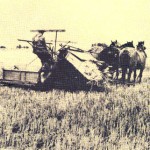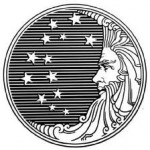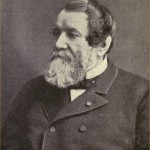0
The Civil War Meant Business Unusual
The Civil War changed the way Americans did business, not merely during the war years but well into the future.
The Civil War’s impact on business was immediate and pervasive. For one thing, the call for volunteer soldiers reduced the workforce in both the North and the South by thousands, creating labor shortages. In many cases, the soldiers’ wives and aging fathers stepped forward to manage farms, plantations, stores, and factories for what most people optimisticaly believed would be a short time.
Issues of supply and demand impacted business greatly. The South no longer had access to the products of the industrialized North, and as the blockade of Southern ports choked the importation of European goods, the fledgling nation faced shortages of manufactured items of all types. Conversely, the cotton mills of the North saw their inventories of raw product dwindle. In the midlands, frustrated farmers could not transport grain via the Mississippi until Vicksburg surrendered in 1863.
For enterprising companies and individuals on both sides, the war offered many opportunities. Government contracts were awarded for everything from ships to cannons, tents, blankets, livestock, canned food, and thousands of other items needed to equip and sustain huge armies.
The duration, magnitude, and outcome of the Civil War imposed significant changes upon the business community of the post-war United States, as demonstrated by the three following examples.
*****
The perception of an industrialized North and an agrarian South seems born out by the 1860 United States census showing that nine of the country’s ten largest cities were in states that remained in the Union during the Civil War. That view, however, is oversimplified. The small farms in the Northeast produced a variety of agricultural crops, and the fertile prairie soil in the newer states of the Midwest (then called the Northwest) grew grains and forage in abundance.
The Midwestern states contained small populations spread across large geographic areas. Iowa, Michigan, Minnesota, and Wisconsin each had populations of fewer than one million in 1860. Although approximately 1,350,000 people lived in Indiana , almost 1,712,000 in Illinois, and nearly 2,340,000 in Ohio, each of those states had at least one large city. In fact, Cincinnati, with a population exceeding 160,000, was the seventh largest city in the country in 1860, and Chicago with its 109,000 residents ranked ninth. Factoring in such cities shows that in 1861 even those states with large populations had significant sparsely populated rural areas.
A high rate of volunteerism, followed by a draft later in the war translated into a manpower shortage in rural areas. In a paper titled “A Fight in the Fields: The Impact of the Civil War on Midwestern Agriculture,” Robert C. Welch notes that 49% of the men eligible for military service in Iowa actually went to war. Other states reported lower, but still significant, percentages. Farmers, says Welch, comprised 48% of the Union’s forces.
Midwestern farms were typically labor-intensive family operations. Farmers used horses and John Deere’s steel plows to break the rich prairie ground, but planting, cultivating, and harvesting were done manually. The efforts of the farmer and his sons (or his hired hands) were needed for a sucessful harvest. As nature allows only a small window for harvesting before the quality of grain begins to deteriorate, farmers planted limited acres.
The exodus of young men from rural areas meant the few remaining farm workers commanded high wages at the same time the war generated an increased demand for farm products. These concurrent conditions changed the face of agriculture. Wanting to take advantage of war-related income opportunities, farmers turned to mechanization.
Mechanical reapers, of course, had been around for years. Cyrus McCormick secured a patent for his machine in 1834 but sold only a few until he moved from Virginia to Chicago, where he built a factory in 1847. By 1860, sales of McCormick reapers surpassed 4,000 units annually, largely because McCormick gave farmers the option of buying his $120 machines on the installment plan. Other manufacturers entered the field, especially after 1848 when McCormick’s patent expired. In fact, Dr. Alan L. Omstead asserts in “The Civil War as a Catalyst of Technological Change in Agriculture,” that 73 firms built mechanical reapers in 1860. Several of them also made mowers and rakes.
The competitive nature of the farm machinery industry kept equipment prices steady during the war. It also prompted manufacturers to use new advertising techniques. Welch reports that print ads showed reapers being driven by women and amputees. Such targeted advedrtising is a clear exampleof the war’s impact upon the industry.
While the cost of machinery remained unchanged, prices for farm products escalated as the government contracted for grain and livestock to feed its soldiers. Seeing a chance to improve their incomes by investing modest amounts in equipment capable of doing the work of several men, farmers bought mowers and reapers.

A man cutting grain with a scythe or cradle could harvest only one to three acres in a day. With the aid of a machine and a team, he could harvest up to twelve.
Whether they planned to market grain directly or feed it to livestock to be sold to packers, farmers increased their cultivated acres. By doing so, they changed American agriculture from subsistence farming into a commercial venture.
*****
The previously noted growth of Cincinnati came as a result of its location on the Ohio River, a 19th century superhighway for steamboats. Ship building and repair flourished, as did facilities for handling cargo. Hotels, restaurants, and theatres appeared for the comfort of travelers riding the rivers to St. Louis or New Orleans.
Another, less glamourous, industry became equally important to Cincinnati. By 1835 it was the nation’s largest meatpacking center and had earned the nickname “Porkapolis.” Animal fat (tallow), a by-product of butchering , was used in candle and soap making, and those secondary industries also became an important part of Cincinnati’s economy.
In 1837 two men with backgrounds in these trades formed a partnership. William Procter and James Gamble found themselves competing with at least 14 other soap and candle makers in the city. Dedicating themselves to producing quality merchandise, they saw their firm grow, and in the 1850’s they took the bold step of building a new plant when rumors of possible civil war made other businessmen cautious. By 1859, sales at Procter and Gamble neared the million dollar mark, and the company employed 80 workers.
During the Civil War, Cincinnati was headquarters for the Union army’s Department of the Ohio and a major departure point for troops assigned to the Western Theater. It also served as a major distributioncenter for the supplies needed to sustain those soldiers. Nearby Camp Denison functioned as a recruitment and training facility and eventually included a military hospital.
In 1862 Procter and Gamble was awared several government contracts to supply soap and candles for the Union army. To meet the demands of the contracts, the factory ran day and night, six days a week.
Just as they refused to allow work on Sundays, William Procter and James Gamble refused to deliver inferior products. As a result, they realized increased profits not only during the war, but also afterward. Thousands of returning soldiers had been so impressed with Procter and Gamble’s candles and soap, they sought those products in civilian life.
How the veterans recognized Procter and Gamble products provides another insight into the effect of the Civil War on American business. Soap was made, not in bars, but in slabs from which a grocer sliced chunks to sell to customers. Similarly, a grocer bought candles in bulk, retailing them in whatever numbers customers wanted. The grocer purchased his merchandise from only one manufacturer at a time, although he might switch suppliers for some reason, such as cost or availability. Branding and packaging, as we know them, did not exist.
However, trademarks existed, and it was Procter and Gamble’s distinctive Man-in-the-Moon trademark the soldiers recognized. It had been adopted as the company symbol in 1851, and by the 1860’s every Procter and Gamble product and all company correspondence carried its imprint. Even illiterate customers could identify the products they had learned to associate with quality.

Thousands of Union veterans remembered seeing this logo on the soap and candles they were issued during the war and looked for it when they resumed civilian life.
The soldiers who lighted thier tents with Procter and Gamble’s candles helped to usher in one of the hallmarks of modern commercialism, unaware that the Man in the Moon would one day look down upon a world filled with swooshes, golden arches, and geckos.
*****
When the War of Rebellion began in 1861, Martha Coston had been fighting a war of her own for more than a decade. At age 35 she was a veteran and a victor. Most important, she would establish a business that would alter the course of the war and save lives.
Widowed at age 21 in 1848, Martha Coston possessed no particular skills through which she could provide for her four children. However, her husband, Benjamin Franklin Coston, had been a talented scientist and inventor.
As director of of the U. S. Navy Laboratory in Washington, D. C., B. F. Coston had attempted to design color-coded signal flares for nighttime communication between ships . (Prior to the invention of radios, ships signaled each other with flags in the day and lanterns at night.) His work on the project extended only to preliminary plans and chemical formulas when he resigned to become president of the Boston Gas Company. His death came less than a year later, the result of inhaling toxic chemicals over the course of years.
Coston found a packet of drawings for the pyrotechnic night flares her husband had worked on for the Navy, along with a notation that he had sent a set to a naval officer for testing. Sensing that this unfinished project was significant, Coston, with great difficulty, suceeded in securing that single test set. Unfortunately, the flares had been damaged and no formula for their chemical composition could be found.
Coston was neither a scientist nor a business person. Even more important, she was not a man. During the next decade as she strove to perfect and manufacture the flares her husband envisioned, she was rebuffed, cheated, and riduculed. Still, she persisted, grateful for the few men who realized the potential value of the flares and assisted her. Among the latter was Secretary of the Navy Isaac Toucey, who arranged for testing of the flares and offered to provide technical help from the Navy after the initial flares failed to perform well.
The theory behind the flares was that three colors fired in a variety of sequences could be used to send coded messages between ships. Coston envisioned a patriotic trio of red, white, and blue, but her plans were stymied when the chemists she hired failed to develop a satisfactory formula for blue.
In 1858 the completion of the first transatlantic cable was celebrated in New York with a spectacular fireworks display that provided Coston with an epiphany: Perhaps the third color for her flares could be found in pyrotechnic factories rather than a laboratory.
Sensing that she was close to solving the last major problem of the flares’ design, Coston wrote to several pyrotechnists in New York, using a male pseudonym to avoid flat-out rejection. One responded that he had earlier created a blue firework. Coston hired him, saying that if he could not produce the blue, she would accept a strong, clear green. Ten days later she received a package containing green and began negotiations with the pyrotechnist to produce the colors for her flares at her factory.
Martha Coston secured a patent for the Coston Maritime Signals in 1859. On the application she lists herself as administratrix of B. Franklin Coston, whom she lists as the inventor.
Secretary Toucey appointed a special Board of Naval Examiners to evaluate Coston’s pyrotechnic signal system. The examiners rated it highly and placed an initial small order but did not purchase the patent as Coston hoped. Tired of watching the Navy repeatedly delay buying the patent , Coston went to Europe in August of 1959, having secured patents in seven countries there. For the next two years, she negotiated with the British and French governments to purchase the patent.
In the summer of 1861, Coston returned to the United States. Knowing the war would bring United States’ ships into situations in which flare communication would be invaluable, she went to Washington to lobby for the bill to purchase her patent, then being debated in Congress. By this time the Navy was acquiring and equipping ships to protect the U. S. coastline and to prevent blockade runners from entering Southern Ports. Coston’s signal flares had suddenly become very important, and on August 5 Congress authorized the Navy to acquire the patent for $20,000, half of Coston’s asking price.
The Navy attempted to produce the flares itself but could not keep production costs competive with those of the Coston Supply Company. During the war Coston supplied the Navy with flares at cost; rampant wartime inflation meant she was actually selling them at a loss. For at least ten years after the war, Martha Coston attempted to collect the money due her. Even though numerous official reports attested to the effectiveness of the flares, especially in catching blockade runners, and some Navy officials estimated that $120,000 was owed Coston, the government offered her only $15,000 in compensation.
Although frustrated and disappointed by her private war against sexism and bureauocracy, Martha Coston continued to prove herself a worthy inventor and business executive. Coston Signals came to be used internationally by foreign governments, merchant fleets, and private vessels. The United States Life Saving Service (later the Coast Guard) relied on Coston Signals for nighttime warnings and rescues. The company established by the young widow continued in operation until the 1980’s.
Martha Colson never heard the term “glass ceiling,” but her private war proved one existed. Her natural intelligence and dogged determination proved that it could be shattered.

